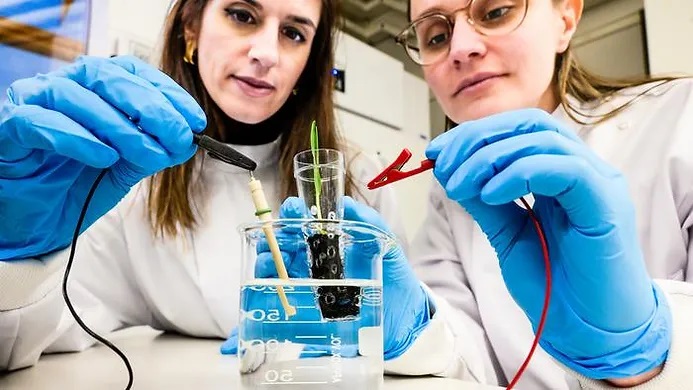Revolutionary eSoil Boosts Barley

In a groundbreaking study featured in the esteemed journal PNAS, scientists from Linköping University have unveiled a revolutionary advancement in agriculture. The researchers, led by Associate Professor Eleni Stavrinidou, employed electricity to stimulate the growth of barley seedlings in hydroponics, a soilless cultivation method.
The outcomes were staggering – barley seedlings grown in the electrically conductive “eSoil” exhibited an astonishing 50% increase in growth within just 15 days. Stavrinidou, from the Laboratory of Organic Electronics at Linköping University, highlighted the urgency of their research in the face of increasing global population and climate change.
Hydroponic cultivation, as demonstrated in this study, eliminates traditional soil and relies on water, nutrients, and a suitable substrate for plant roots. This closed system facilitates efficient water recirculation, precise nutrient delivery, and minimal water consumption, addressing the limitations of conventional farming.
Notably, the eSoil is composed of cellulose, the most abundant biopolymer on Earth, blended with a conductive polymer known as PEDOT. This innovative combination, applied to plant cultivation, represents a significant breakthrough.
Stavrinidou envisions their work opening new possibilities in hydroponic cultivation, particularly in areas with limited arable land and harsh environmental conditions.
The eSoil’s potential impact extends beyond traditional agriculture. As global population growth and climate change disrupt farming practices, innovative solutions like hydroponics and eSoil become crucial. The ability to produce more food with fewer resources in controlled environments offers hope for a sustainable and secure future.
Linköping University’s eSoil development is not just a scientific achievement but a beacon of hope, showcasing the potential for a more sustainable and food-secure future through the convergence of science and innovation.
Repurposed article originally published in The Brighter Side of News.









